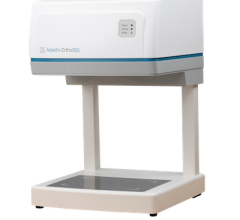
Greg Freiherr has reported on developments in radiology since 1983. He runs the consulting service, The Freiherr Group.
How to Boost Cybersecurity in Medical Imaging

Cyber hackers pose a worsening threat to radiology and the rest of medical imaging. This risk might be reduced, however, by applying best practices developed by professional organizations such as HIMSS (Healthcare Information and Management Systems Society) and government agencies such as HHS (Health and Human Services) and NIST (National Institute of Standards).
This help is coming none too soon, according to Axel Wirth, distinguished technical architect at Symantec and one of the world’s foremost authorities on cybersecurity.
“Attacks are not only becoming more frequent and more sophisticated but they are also becoming much more malicious and purposeful,” said Wirth in an ITN podcast on cybersecurity in medical imaging and health care.
Wirth, who has spoken often on health IT topics, including medical device cyber safety, will deliver the keynote speech February 11 at the Cybersecurity forum during the annual HIMSS convention in Orlando.
Why Hackers Target Medical Imaging
Medical imaging presents easy targets to attackers. This is one of the prime reasons it has been attacked, Wirth said during ITN’s podcast on cybersecurity. Scanners “and things like PACS and PACS workstations were exploited by attackers as a beachhead,” Wirth said in the podcast, noting that cyber attacks on imaging equipment and imaging networks have been done to access “higher valued information.”
But cyber attackers may also target medical imaging and health care for other reasons, he said. Nation states and nation-sponsored groups may be after information about the design of medical devices and formularies for new pharmaceuticals, as well as clinical trial data.
Or they may use malware to encrypt patient data, and then offer to sell the decryption code to victims. Health care is not the only industry susceptible to ransomware, but it is especially vulnerable. Wirth said, “I can’t tell a patient that arrives in the emergency room with chest pain that unfortunately we are dealing with a cyber attack: ‘Can you come back next week?’ ”
The good news is that cybersecurity in health care is maturing “at a fairly rapid pace,” Wirth said in the podcast. The key to continuing that pace is making sure cybersecurity is applied throughout health care — “not just (to) a few select thought leaders and large hospitals.”
Where To Find Best Practices in Cybersecurity
An HHS document detailing cybersecurity practices in health care notes the cybersecurity risks and how different size practices might address them. “What is good about this document is that they really broke it down, based on size … and maturity of the organization,” said Wirth, who cited similarly crafted HIMSS guidances “for various types of organizations based on size and maturity level.”
Wirth also cited a NIST publication that establishes a generic cybersecurity framework. “Different industries and individual organizations (can) take that framework, adapt it to their needs and circumstances, and then develop a roadmap for a path to security,” he said.
As the interconnectivity of medical imaging increases due to cloud computing, analytics and data storage, as well as the expansion of enterprise imaging, the threat from cyber criminals is growing. “More connectivity always creates more opportunity (for cyber attackers),” Wirth said.
In the podcast, Wirth describes steps that providers might take in concert with equipment manufacturers to counter this rising threat. Some “would depend on the type of equipment you are purchasing,” he said. In the podcast, he contrasts how considerations differ when purchasing ultrasound scanners, for example, versus PET/CTs.
Additional Reading:
FDA and DHS Expand Partnership on Medical Device Cybersecurity
Agents of Change: Cybersecurity In A World Of Old And New
Greg Freiherr is a contributing editor for Imaging Technology News (ITN). Over the past three decades, Freiherr has served as business and technology editor for publications in medical imaging, as well as consulted for vendors, professional organizations, academia and financial institutions.
Editor's note: In preparation for the upcoming HIMSS (Healthcare Information and Management Systems Society) Conference on Feb. 11, contributing editor Greg Freiherr begins the show coverage with this exclusive podcast and accompanying blog. This is the first podcast in a series of three.


 December 10, 2025
December 10, 2025 









